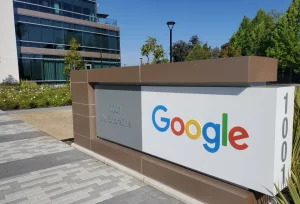YouTube has recently taken decisive action against users employing ad blockers on its site. After a few content pieces, the platform will cease video playback unless the ad blocker is deactivated. For an ad-free experience, users are encouraged to subscribe to YouTube Premium at a cost.
While this may seem like an aggressive move, it wasn’t entirely unexpected, as YouTube had been testing a similar approach for several months. Prior to this recent crackdown, the Google-owned video service has been embroiled in an ongoing conflict, akin to a game of cat-and-mouse or an arms race, with ad-blocking software. YouTube consistently introduces new methods to deliver ads to users with ad blockers, prompting ad blockers to devise innovative strategies to bypass these ad-serving measures.
As highlighted in a blog post by the ad- and tracker-blocking company Ghostery, YouTube employs a range of techniques to outsmart ad blockers. This includes embedding ads directly into the video itself, making it difficult for ad blockers to distinguish between content and advertisements. Additionally, YouTube serves ads from the same domain as the video, misleading filters designed to block ads from third-party domains.
YouTube is not the sole player in these endeavors; numerous digital publishers make comparable efforts to thwart ad blockers. The attention YouTube’s moves garner is amplified due to its widespread popularity, as highlighted by AdGuard CTO Andrey Meshkov, who stated, “Even when they run a test on a share of users… the number of affected people is very high.”
Simultaneously, Ghostery’s Director of Product and Engineering, Krzysztof Modras, acknowledges that as one of the world’s largest publishers, YouTube consistently invests in strategies to circumvent ad blocking, and these investments have proven effective. Many common ad blocking tactics, such as DNS filtering (targeting third-party domains), network filtering (described as “more selective” and proficient at blocking first-party requests), and cosmetic filtering (which can block ads without creating ad-shaped gaps in website content), no longer succeed on the platform.
Modras notes that YouTube is now adapting its methods more frequently than ever before. To counteract changes in ad delivery and ad blocker detection, block lists must be updated at least daily and sometimes even more frequently. While innovation is prevalent across the industry, some ad blockers struggle to keep pace with these rapid changes.
Staying in step with YouTube is anticipated to become even more challenging next year, with the impending adoption of the Manifest V3 standard by Google’s Chrome browser. Manifest V3 significantly restricts the actions allowed for extensions. According to Modras, under Manifest V3, when an ad blocker needs to update its blocklist, potentially multiple times a day, it will have to release a comprehensive update and undergo a review process, which could take anywhere from a few hours to several weeks.
Modras expressed concerns that through Manifest V3, Google is closing the door on innovation in the ad blocking landscape, introducing an additional layer of gatekeeping that will impede the responsiveness of ad blockers to new ads and online tracking methods.
For many users, the skirmish between YouTube and ad blockers has largely been inconspicuous or easily dismissed until now. The introduction of the new barrier dramatically alters this dynamic, compelling users to modify their behavior if they wish to access YouTube videos. However, ad blocking companies suggest that it’s more of a policy change than a technical breakthrough, indicating YouTube’s newfound willingness to risk alienating its user base.
“It’s not that YouTube’s move is groundbreaking; many publishers have already taken similar steps,” stated Meshkov. “The distinction lies in the scale of YouTube.” This scale impacts both the number of affected users and the resources needed to sustain these defenses on the publisher’s side. “Embarking on this path is highly expensive, requiring constant maintenance,” he added, “essentially necessitating a dedicated team. Only a handful of companies can afford it.”
Ad blockers are persistently adapting, even if it demands more effort from users. For instance, Modras highlighted that throughout much of October, Ghostery saw three to five times the typical number of daily uninstalls and installs, along with a 30 percent surge in downloads on Microsoft Edge, where their ad blocker continued to function on YouTube for a certain period. This activity suggests users swiftly cycle through various products and strategies to circumvent YouTube’s anti-ad block measures, discarding them when they become ineffective.
Currently, uBlock Origin still appears effective on YouTube. However, a detailed Reddit post outlining how to avoid triggering the platform’s ad-block detection notes that because “YouTube changes their detection scripts regularly,” users might encounter pop-up warnings and the anti-ad block wall during “brief periods of time” between script changes (on YouTube’s end) or filter updates (on uBlock’s side). Additionally, uBlock Origin may cease working on Chrome next year due to the anticipated Manifest V3. For users hoping to utilize it on non-Chrome browsers, Google has reportedly started slowing down YouTube’s load times on alternate browsers, seemingly as part of the anti-ad block effort. While 404 Media and Android Authority, both reporting on this issue, couldn’t replicate the artificially slowed load times, users seemingly managed to bypass them using a “user-agent switcher” that disguises one browser as another.
Why do certain ad blockers still function effectively? The key lies in a novel approach known as Scriptlet injection, which deploys scripts to finely modify website behavior. For instance, Meshkov explained that an ad blocker could employ a scriptlet to eliminate a cookie with a specific name or halt the execution of JavaScript when attempting to access a page property with a specified name.
On YouTube, according to Modras, scriptlets have the capability to alter the data before it is utilized by the page script. For example, a scriptlet might identify and remove specific data identifiers, allowing for a “subtle enough” approach to blocking ads seamlessly intertwined with website functionality without affecting that functionality.
Scriptlet injection also plays a vital role in a critical aspect of the ad blocker’s role: evading detection. Meshkov from AdGuard mentioned that teams are actively working on this, employing scriptlets to thwart common fingerprinting methods that websites use to identify ad blockers, and avoiding activities that would alert a website to their presence.
Currently, Scriptlet injection appears to be the most promising approach, with Modras describing it as the “only reliable way of ad blocking on YouTube” at present.
Meshkov acknowledged the accuracy of this assessment when confined to browser extensions, the predominant distribution method for popular ad blockers. However, he highlighted network-level ad blockers and alternative YouTube clients like NewPipe as alternative approaches that can effectively counteract YouTube’s measures. A recent blog post by AdGuard provided additional steps for users, including checking for filter updates, ensuring the absence of multiple ad blockers, and utilizing a desktop ad-blocking app, which should be more challenging to detect than an extension. AdGuard itself offers both network-level blocking and desktop apps.
Notably, AdBlock Plus, a widely used ad blocker, has opted not to attempt to circumvent YouTube’s measures. Vegard Johnsen, Chief Product Officer at AdBlock Plus developer eyeo, expressed respect for YouTube’s decision to initiate a dialogue with users regarding content monetization. Referring to the independently run Acceptable Ads program, which eyeo created and participates in, Johnsen mentioned that the majority of their users have embraced the presence of ads. He emphasized, “we’ve made it clear we don’t believe in circumvention.”
Likewise, a spokesperson from YouTube reiterated that the platform’s ads support a diverse global ecosystem of creators and emphasized that the use of ad blockers violates YouTube’s Terms of Service.
In the ongoing clash between YouTube and ad blockers, Modras highlighted a significant advantage on their side: being open source allows them to tap into the knowledge of the broader community. He noted that “Scriptlet injection is already gaining more potency, and it’s becoming increasingly challenging for anti-ad blockers to detect.” Interestingly, the current situation has unintentionally fueled an arms race, with YouTube inadvertently improving ad blockers. The knowledge and techniques acquired from innovating within the YouTube platform also find application in countering other ad and tracking systems.
Even if a considerable number of users grow frustrated with the new countermeasures and opt to whitelist YouTube, Modras suggested that ad blockers can still impact the platform’s bottom line. He explained that if users disable ad blocking solely for YouTube while maintaining protection on other websites, the platform will realize its inability to effectively target ads to these users, lacking data on their activity on those other sites.
Looking ahead, Meshkov indicated that other publishers are unlikely to erect a similar wall, as few services wield the same level of control over an entire media ecosystem—owning not only the most popular video-sharing service but also the most widely used web browser for viewing it. Meshkov noted, “YouTube is in a unique position as it is de facto a monopoly.” Despite these challenges, ad block enthusiasts remain undeterred in their mission. Meshkov succinctly stated, “YouTube’s policy is just good motivation to do it better.”




